Exploration of Aluminum and Titanium Alloys in the Stream-Wise and Secondary Flow Directions Comprising the Significant Impacts of Magnetohydrodynamic and Hybrid Nanofluid
Abstract
1. Introduction
2. Problem Formulation
2.1. Thermo-Physical Properties of the Hybrid Nanoliquid
2.2. Skin Friction
2.3. Nusselt Number
2.4. Sherwood Number
3. Results and Discussion
4. Conclusions
- For the first solution, the velocity of the nanoliquid increased in the stream-wise and cross flow directions with a suction parameter, while a change in pattern was observed in the second solution. For both solutions, the concentration and temperature of the nanoparticles decreased.
- In the first solution, the magnetic field constraint reduced the velocity of the nanofluid, and it increased in the lower branch result, whereas in the upper branch result, the temperature and concentration rose and decreased in the lower branch solution.
- The temperature distribution changed due to in both results, whereas the impact of radiation was the opposite manner.
- The nanoliquid velocity decreased in the first result due to the hybrid nanoparticles, while the opposite pattern was seen in the second test. In both cases, the concentration and temperature fields increased.
- The Nusselt number increased in the first and second solutions because of the Soret numbers, while the reverse behavior was seen because of the Dufour numbers.
- In both results, the effect of the magnetic number induced an increase in skin friction in the stream-wise and cross flow directions. However, in the first solution, the Nusselt number and the Sherwood number declined and increased in the second solution.
Author Contributions
Funding
Acknowledgments
Conflicts of Interest
Nomenclature
| thermal diffusivity | |
| intensity of the magnetic field | |
| Concentration | |
| ambient fluid concentration | |
| wall concentration | |
| skin friction coefficients | |
| specific heat | |
| mass diffusivity | |
| Dufour number | |
| dimensionless velocities | |
| coefficient of mean absorption | |
| thermal conductivity | |
| magnetic parameter | |
| Nusselt number | |
| Prandtl number | |
| radiative heat flux | |
| radiation parameter | |
| local Reynolds number | |
| S | Suction |
| Sc | Schmidt number |
| Soret number | |
| Sherwood number | |
| Temperature | |
| free-stream temperature | |
| wall temperature | |
| constant velocity | |
| transverse velocity | |
| velocity components | |
| Cartesian coordinates |
Greek Symbols
| moving parameter | |
| dynamic viscosity | |
| volume fractions of nanoparticles | |
| dimensionless temperature | |
| temperature ratio parameter | |
| dimensionless concentration | |
| kinematic viscosity of base fluid | |
| Density | |
| Stefan–Boltzmann constant | |
| electrical conductivity | |
| stream function | |
| similarity variable |
Subscripts
| solid nanoparticles | |
| hbnf | hybrid nanofluid |
| F | base fluid |
Superscripts
| ‘ | derivative w.r.t. |
Appendix A
References
- Choi, S.U.S.; Eastman, J.A. Enhancing thermal conductivity of fluids with nanoparticles. In Proceedings of the 1995 International Mechanical Engineering Congress and Exhibition, San Francisco, CA, USA, 12–17 November 1995; ASME: New York, NY, USA, 1995; Volume 231, pp. 99–106. [Google Scholar]
- Khanafer, K.; Vafai, K.; Lightstone, M. Buoyancy-driven heat transfer enhancement in a two-dimensional enclosure utilizing nanofluids. Int. J. Heat Mass Transf. 2003, 46, 3639–3653. [Google Scholar] [CrossRef]
- Ali, H.M.; Ali, H.; Liaquat, H.; Bin Maqsood, H.T.; Nadir, M.A. Experimental investigation of convective heat transfer augmentation for car radiator using ZnO–water nanofluids. Energy 2015, 84, 317–324. [Google Scholar] [CrossRef]
- Ghasemi, B.; Aminossadati, S.M. Natural Convection Heat Transfer in an Inclined Enclosure Filled with a Water-Cuo Nanofluid. Numer. Heat Transf. Part A Appl. 2009, 55, 807–823. [Google Scholar] [CrossRef]
- Ahmad, S.; Pop, I. Mixed convection boundary layer flow from a vertical flat plate embedded in a porous medium filled with nanofluids. Int. Commun. Heat Mass Transf. 2010, 37, 987–991. [Google Scholar] [CrossRef]
- Arshad, W.; Ali, H.M. Experimental investigation of heat transfer and pressure drop in a straight minichannel heat sink using TiO2 nanofluid. Int. J. Heat Mass Transf. 2017, 110, 248–256. [Google Scholar] [CrossRef]
- Haq, R.U.; Nadeem, S.; Khan, Z.H.; Akbar, N.S. Thermal radiation and slip effects on MHD stagnation point flow of nanofluid over a stretching sheet. Phys. E Low Dimens. Syst. Nanostruct. 2015, 65, 17–23. [Google Scholar] [CrossRef]
- Hayat, T.; Khan, M.I.; Farooq, M.; Yasmeen, T.; Alsaedi, A. Water-carbon nanofluid flow with variable heat flux by a thin needle. J. Mol. Liq. 2016, 224, 786–791. [Google Scholar] [CrossRef]
- Rehman, K.U.; Malik, M.Y.; Makinde, O.D. A comparative study of nanofluids flow yields by an inclined cylindrical surface in a double stratified medium. Eur. Phys. J. Plus 2017, 132, i2017–i11679. [Google Scholar] [CrossRef]
- Mahbubul, I.; Khan, M.M.A.; Ibrahim, N.I.; Ali, H.M.; Al-Sulaiman, F.A.; Saidur, R. Carbon nanotube nanofluid in enhancing the efficiency of evacuated tube solar collector. Renew. Energy 2018, 121, 36–44. [Google Scholar] [CrossRef]
- Khan, M.S.; Abid, M.; Ali, H.M.; Amber, K.P.; Javed, S.; Bashir, M.A. Comparative performance assessment of solar dish assisted s-CO2 Brayton cycle using nanofluids. Appl. Therm. Eng. 2019, 148, 295–306. [Google Scholar] [CrossRef]
- Sajid, M.U.; Ali, H.M. Recent advances in application of nanofluids in heat transfer devices: A critical review. Renew. Sustain. Energy Rev. 2019, 103, 556–592. [Google Scholar] [CrossRef]
- Habib, R.; Karimi, N.; Yadollahi, B.; Doranehgard, M.H.; Li, L.K.B. A pore-scale assessment of the dynamic response of forced convection in porous media to inlet flow modulations. Int. J. Heat Mass Transf. 2020, 153, 119657. [Google Scholar] [CrossRef]
- Moravej, M.; Saffarian, M.R.; Li, L.K.B.; Doranehgard, M.H.; Xiong, Q. Experimental investigation of circular flat-panel collector performance with spiral pipes. J. Therm. Anal. Calorim. 2019, 140, 1229–1236. [Google Scholar] [CrossRef]
- Saffarian, M.R.; Moravej, M.; Doranehgard, M.H. Heat transfer enhancement in a flat plate solar collector with different flow path shapes using nanofluid. Renew. Energy 2020, 146, 2316–2329. [Google Scholar] [CrossRef]
- Sarkar, J.; Ghosh, P.; Adil, A. A review on hybrid nanofluids: Recent research, development and applications. Renew. Sustain. Energy Rev. 2015, 43, 164–177. [Google Scholar] [CrossRef]
- Sidik, N.A.C.; Adamu, I.M.; Jamil, M.M.; Kefayati, G.; Mamat, R.; Najafi, G. Recent progress on hybrid nanofluids in heat transfer applications: A comprehensive review. Int. Commun. Heat Mass Transf. 2016, 78, 68–79. [Google Scholar] [CrossRef]
- Gupta, M.; Singh, V.; Kumar, S.; Kumar, S.; Dilbaghi, N.; Said, Z. Up to date review on the synthesis and thermophysical properties of hybrid nanofluids. J. Clean. Prod. 2018, 190, 169–192. [Google Scholar] [CrossRef]
- Huminic, G.; Huminic, A. Hybrid nanofluids for heat transfer applications: A state-of-the-art review. Int. J. Heat Mass Transf. 2018, 125, 82–103. [Google Scholar] [CrossRef]
- Shah, T.R.; Ali, H.M. Applications of hybrid nanofluids in solar energy, practical limitations and challenges: A critical review. Sol. Energy 2019, 183, 173–203. [Google Scholar] [CrossRef]
- Babar, H.; Sajid, M.U.; Ali, H.M. Viscosity of hybrid nanofluids: A critical review. Therm. Sci. 2019, 23, 1713–1754. [Google Scholar] [CrossRef]
- Qiu, L.; Zhu, N.; Feng, Y.; Michaelides, E.E.; Żyła, G.; Jing, D.; Zhang, X.; Norris, P.M.; Markides, C.N.; Mahian, O. A review of recent advances in thermophysical properties at the nanoscale: From solid state to colloids. Phys. Rep. 2020, 843, 1–81. [Google Scholar] [CrossRef]
- Prasad, V.R.; Vasu, B.; Bég, O.A. Thermo-diffusion and diffusion-thermo effects on MHD free convection flow past a vertical porous plate embedded in a non-Darcian porous medium. Chem. Eng. J. 2011, 173, 598–606. [Google Scholar] [CrossRef]
- Pal, D.; Mondal, H. MHD non-Darcian mixed convection heat and mass transfer over a non-linear stretching sheet with Soret–Dufour effects and chemical reaction. Int. Commun. Heat Mass Transf. 2011, 38, 463–467. [Google Scholar] [CrossRef]
- Makinde, O.D. On MHD mixed convection with Soret and Dufour effects past a vertical plate embedded in a porous medium. Lat. Am. Appl. Res. 2011, 41, 63–68. [Google Scholar]
- Chamkha, A.; Rashad, A. Unsteady heat and mass transfer by MHD mixed convection flow from a rotating vertical cone with chemical reaction and Soret and Dufour effects. Can. J. Chem. Eng. 2013, 92, 758–767. [Google Scholar] [CrossRef]
- Zaib, A.; Khan, I. Thermal diffusion and diffusion thermo effects on unsteady MHD free convection flow over a stretching surface considering Joule heating and viscous dissipation with thermal stratification, chemical reaction and Hall current. J. Frankl. Inst. 2014, 351, 1268–1287. [Google Scholar] [CrossRef]
- Reddy, P.S.; Chamkha, A.J. Soret and Dufour effects on MHD convective flow of Al2O3–water and TiO2–water nanofluids past a stretching sheet in porous media with heat generation/absorption. Adv. Powder Technol. 2016, 27, 1207–1218. [Google Scholar] [CrossRef]
- Dzulkifli, N.F.; Bachok, N.; Pop, I.A.; Yacob, N.; Arifin, N.M.; Rosali, H. Stability of Partial slip, Soret and Dufour effects on unsteady boundary layer flow and heat transfer in Copper-water nanofluid over a stretching/shrinking sheet. J. Phys. Conf. Ser. 2017, 890, 12031. [Google Scholar] [CrossRef]
- Idowu, A.S.; Falodun, B.O. Soret–Dufour effects on MHD heat and mass transfer of Walter’s-B viscoelastic fluid over a semi-infinite vertical plate: Spectral relaxation analysis. J. Taibah Univ. Sci. 2018, 13, 49–62. [Google Scholar] [CrossRef]
- Jones, R.T. Effects of Sweepback on Boundary-Layer and Separation; NACA Report No. 884; National Advisory Committee for Aeronautics. Ames Aeronautical Lab.: Moffett Field, CA, USA, 1947. [Google Scholar]
- Weidman, A. New solutions for laminar boundary layers with cross flow. Zeitschrift für Angewandte Mathematik und Physik ZAMP 1996, 48, 341–356. [Google Scholar] [CrossRef]
- Bhattacharyya, K.; Pop, I. Heat transfer for boundary layers with cross flow. Chin. Phys. B 2014, 23, 024701. [Google Scholar] [CrossRef]
- Haq, R.U.; Khan, Z.H.; Khan, W.A.; Shah, I.A. Viscous Dissipation Effects in Water Driven Carbon Nanotubes along a Stream Wise and Cross Flow Direction. Int. J. Chem. React. Eng. 2017, 15. [Google Scholar] [CrossRef]
- Khan, U.; Zaib, A.; Khan, I.; Nisar, K.S. Activation energy on MHD flow of titanium alloy (Ti6Al4V) nanoparticle along with a cross flow and streamwise direction with binary chemical reaction and non-linear radiation: Dual Solutions. J. Mater. Res. Technol. 2020, 9, 188–199. [Google Scholar] [CrossRef]
- Khan, U.; Zaib, A.; Khan, I.; Baleanu, D.; Nisar, K.S. Enhanced heat transfer in moderately ionized liquid due to hybrid MoS2/SiO2 nanofluids exposed by nonlinear radiation: Stability analysis. Crystals 2020, 10, 142. [Google Scholar] [CrossRef]
- Öztop, H.F.; Abu-Nada, E. Numerical study of natural convection in partially heated rectangular enclosures filled with nanofluids. Int. J. Heat Fluid Flow 2008, 29, 1326–1336. [Google Scholar] [CrossRef]
- Makinde, O.D.; Mahanthesh, B.; Gireesha, B.J.; Shashikumar, N.; Monaledi, R.; Tshehla, M. MHD Nanofluid Flow Past a Rotating Disk with Thermal Radiation in the Presence of Aluminum and Titanium Alloy Nanoparticles. Defect Diffus. Forum 2018, 384, 69–79. [Google Scholar] [CrossRef]
- Irfan, M.; Khan, W.A.; Khan, M.; Waqas, M. Evaluation of Arrhenius activation energy and new mass flux condition in Carreau nanofluid: Dual solutions. Appl. Nanosci. 2020. [Google Scholar] [CrossRef]
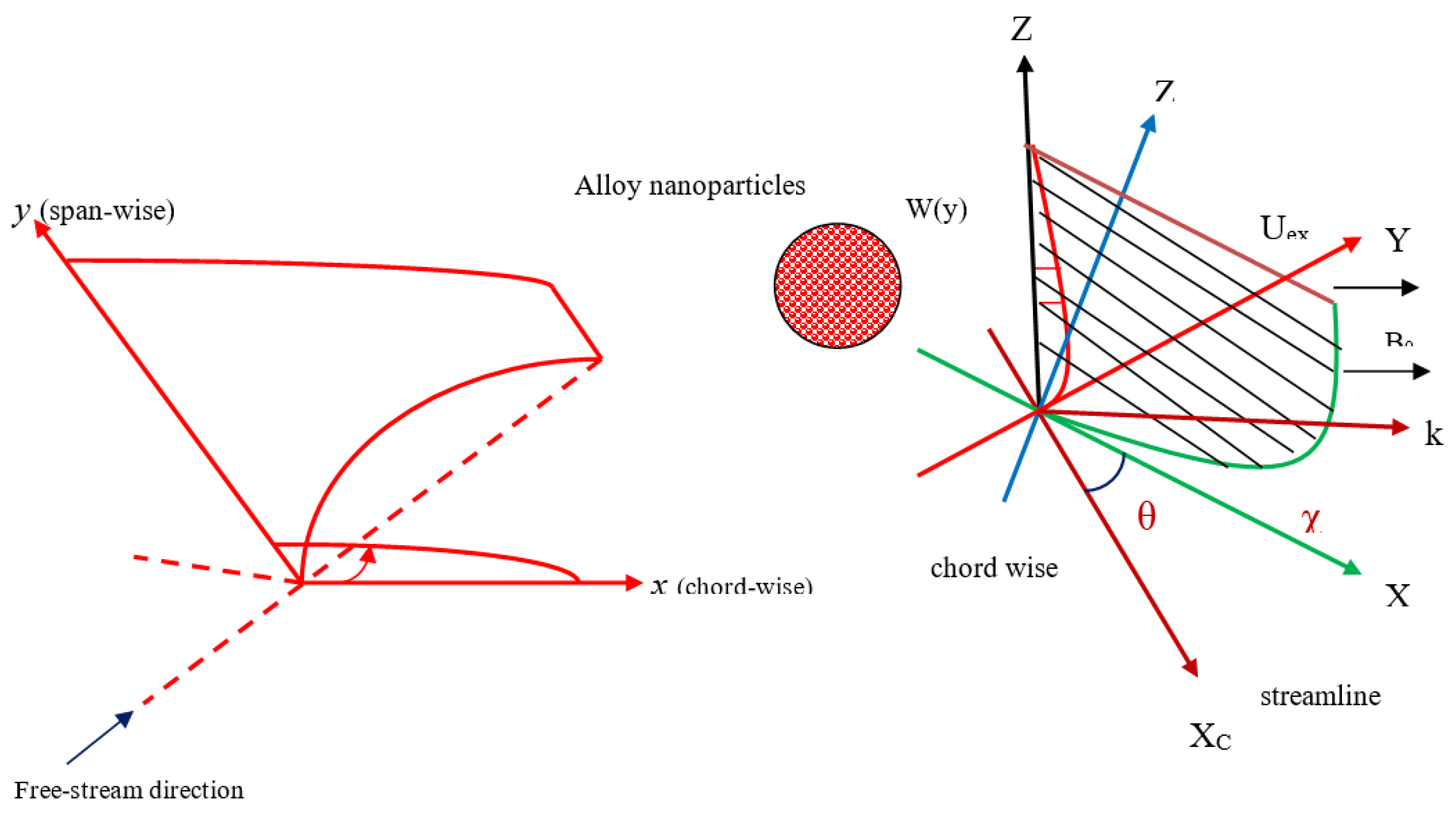

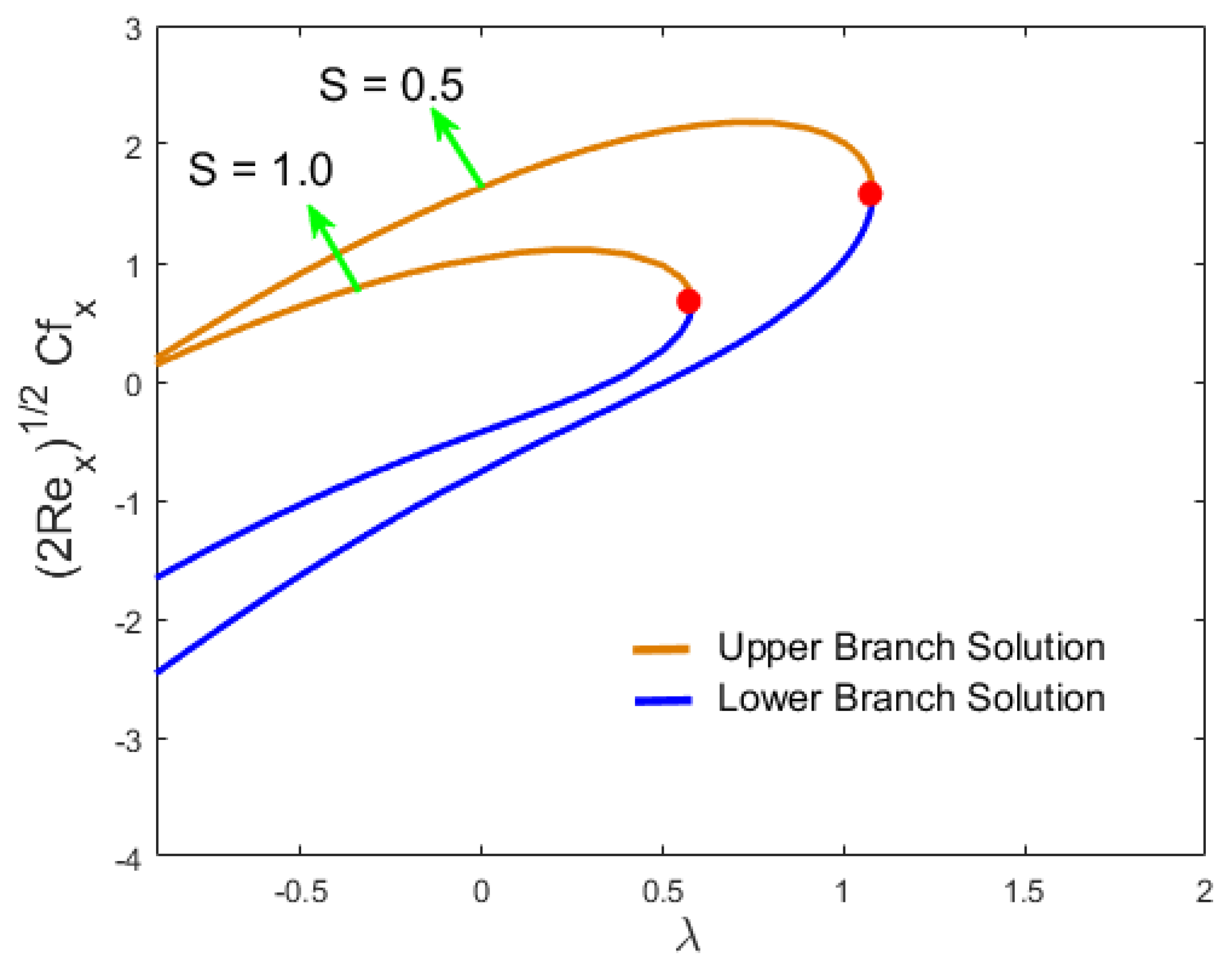


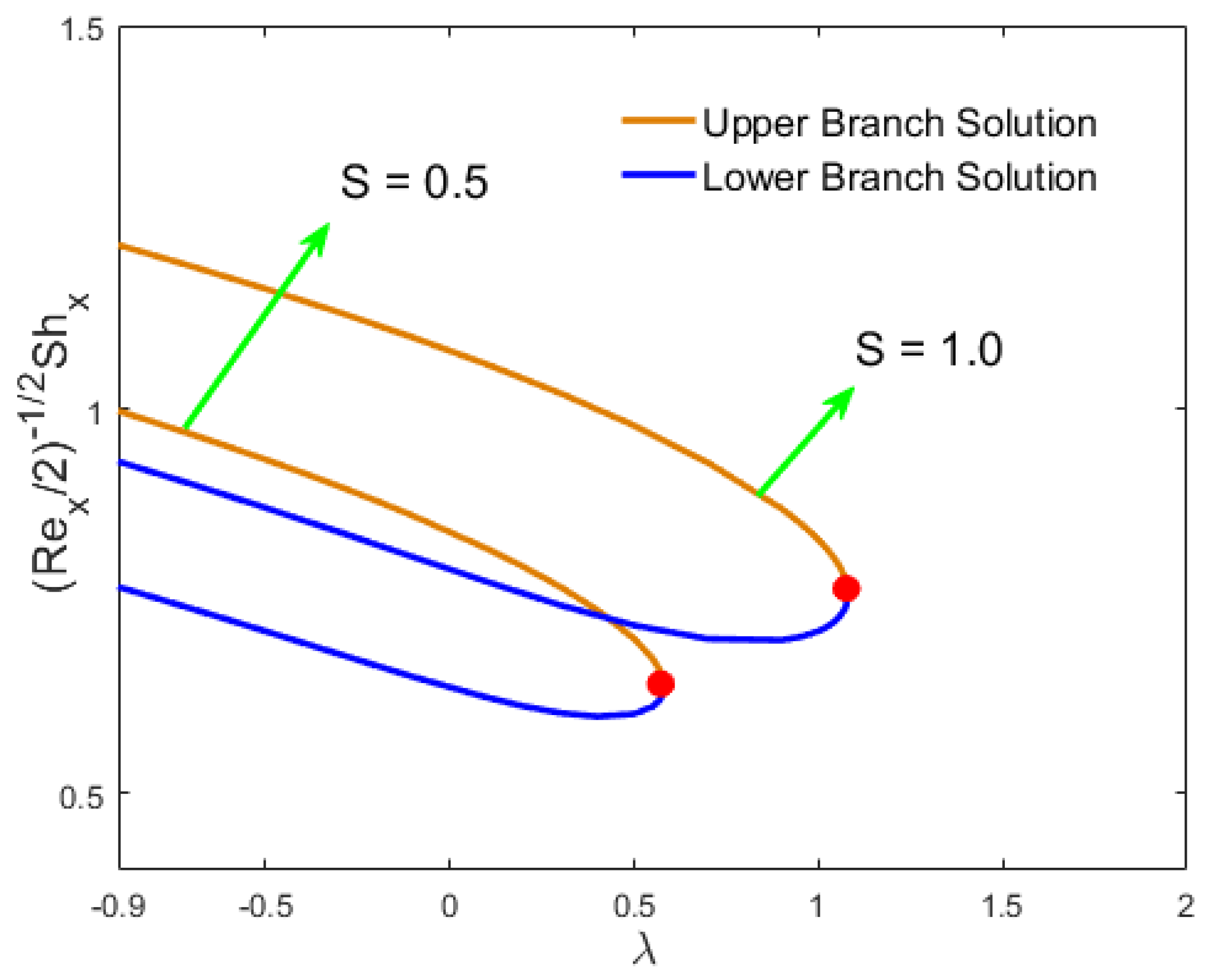
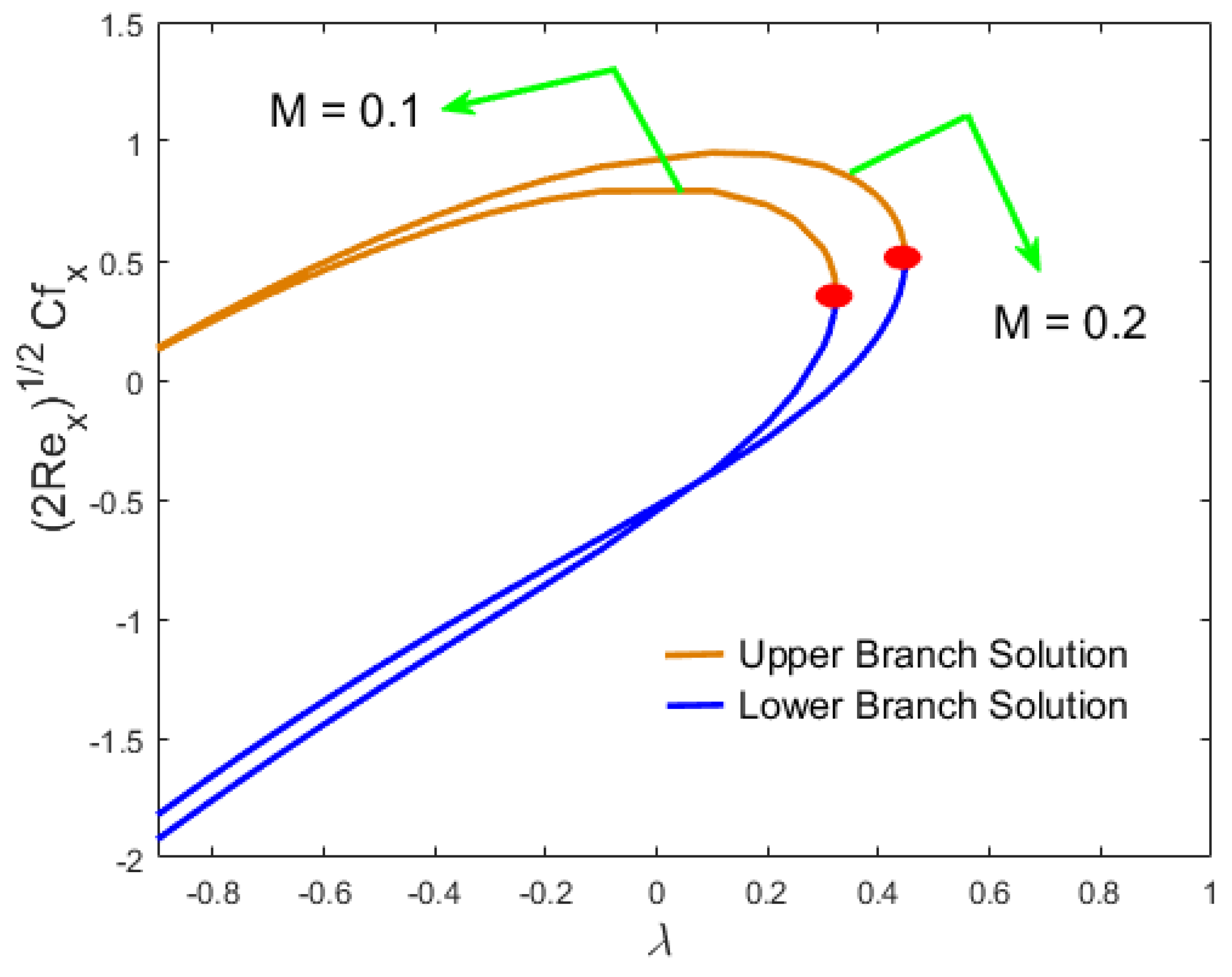
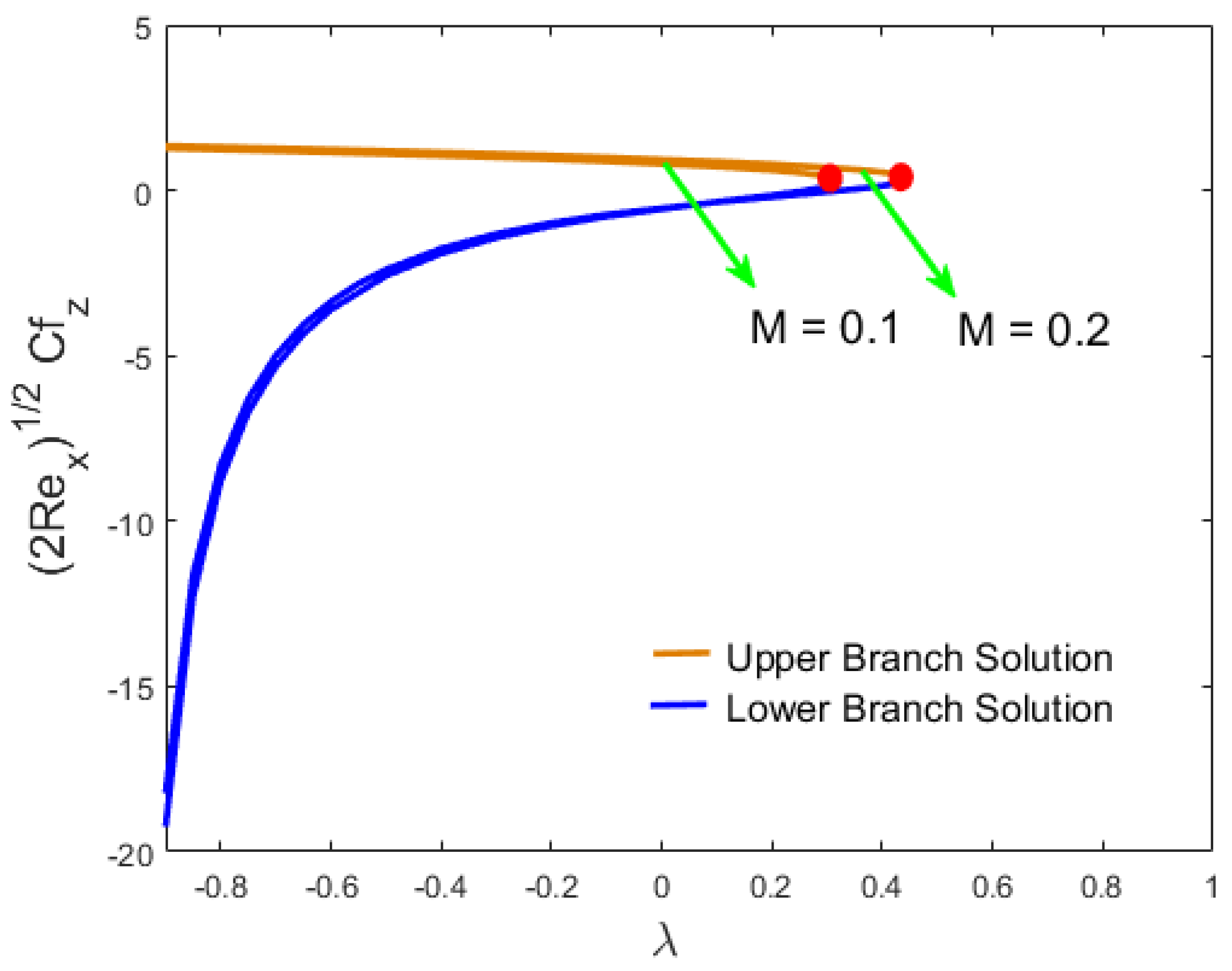

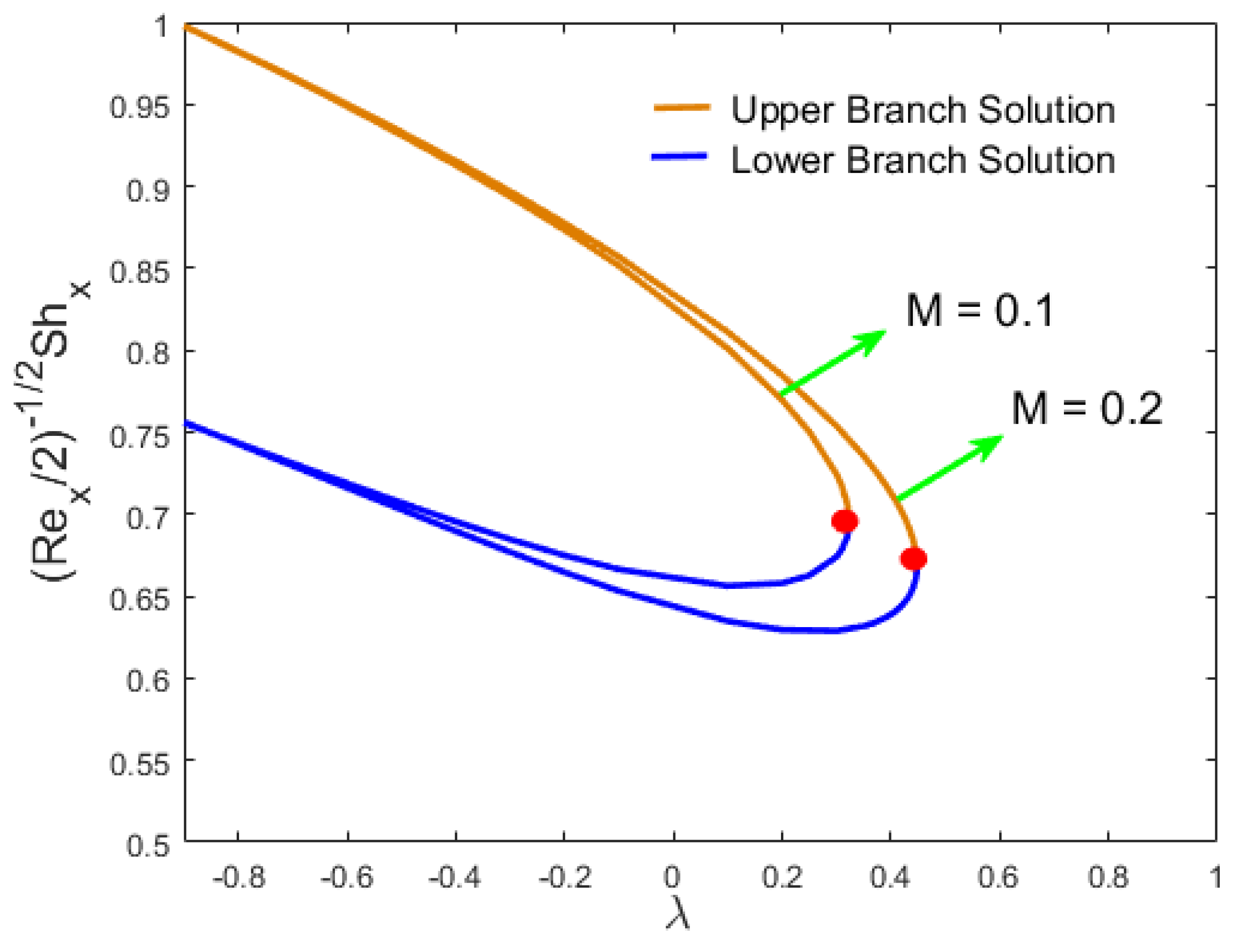


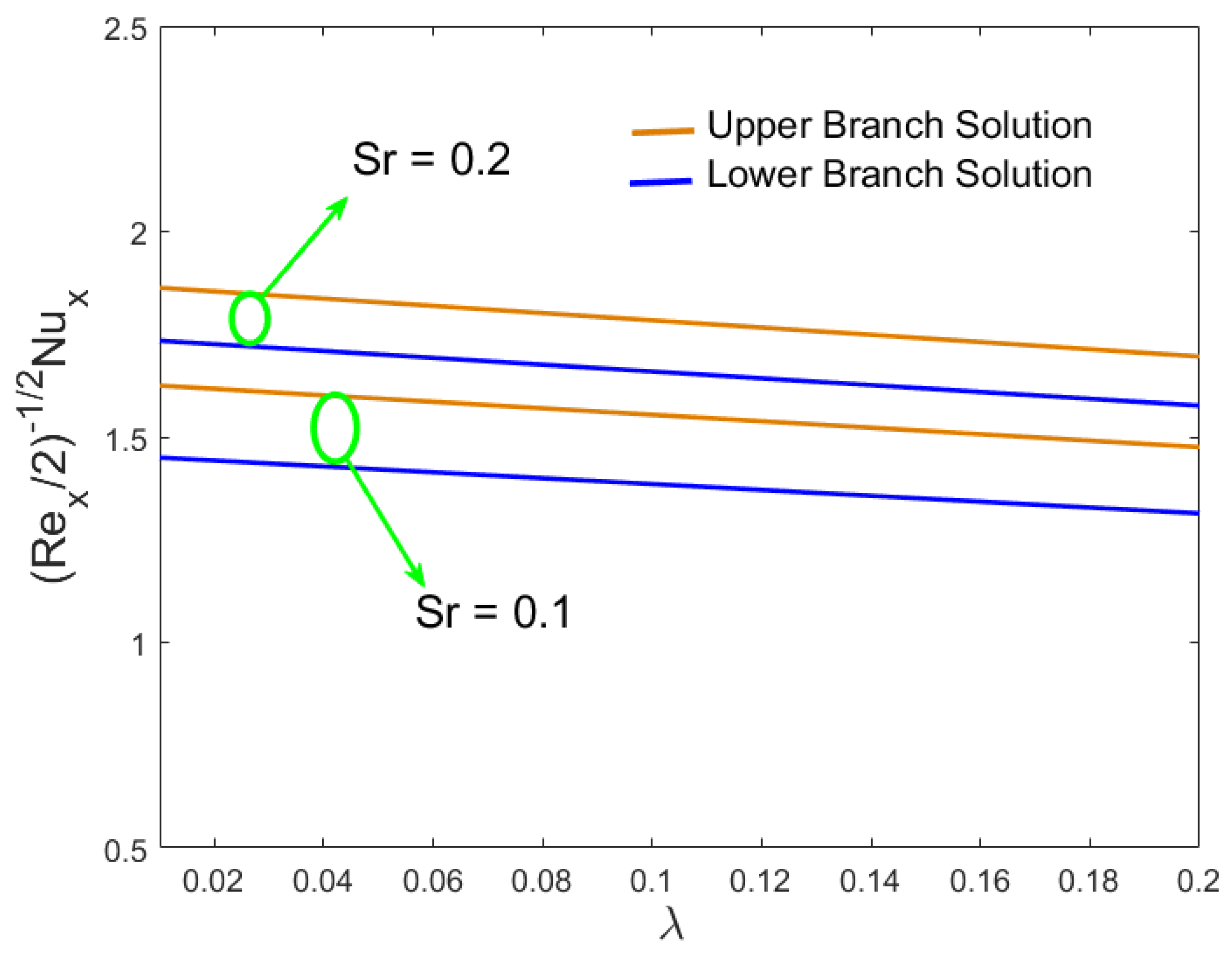
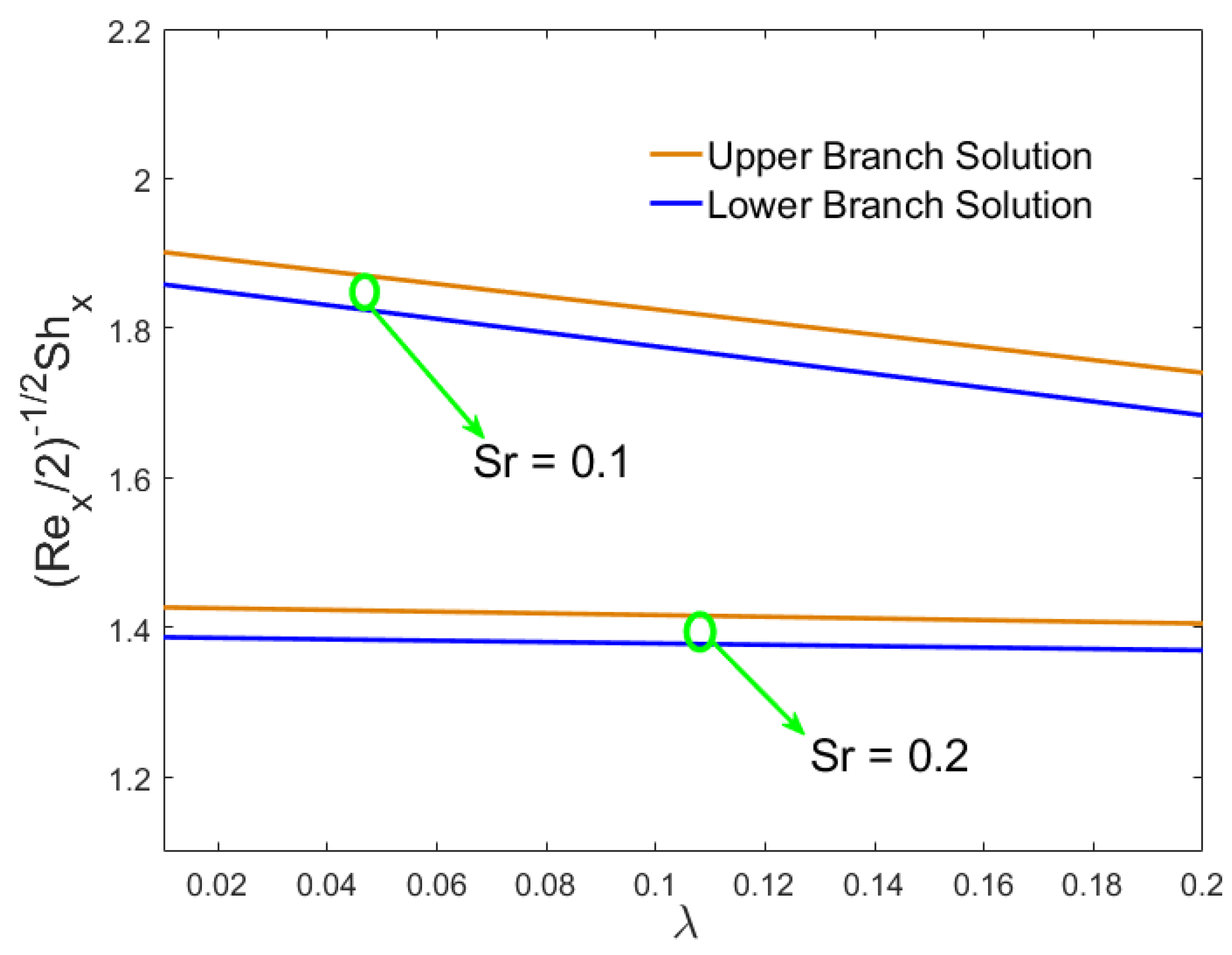

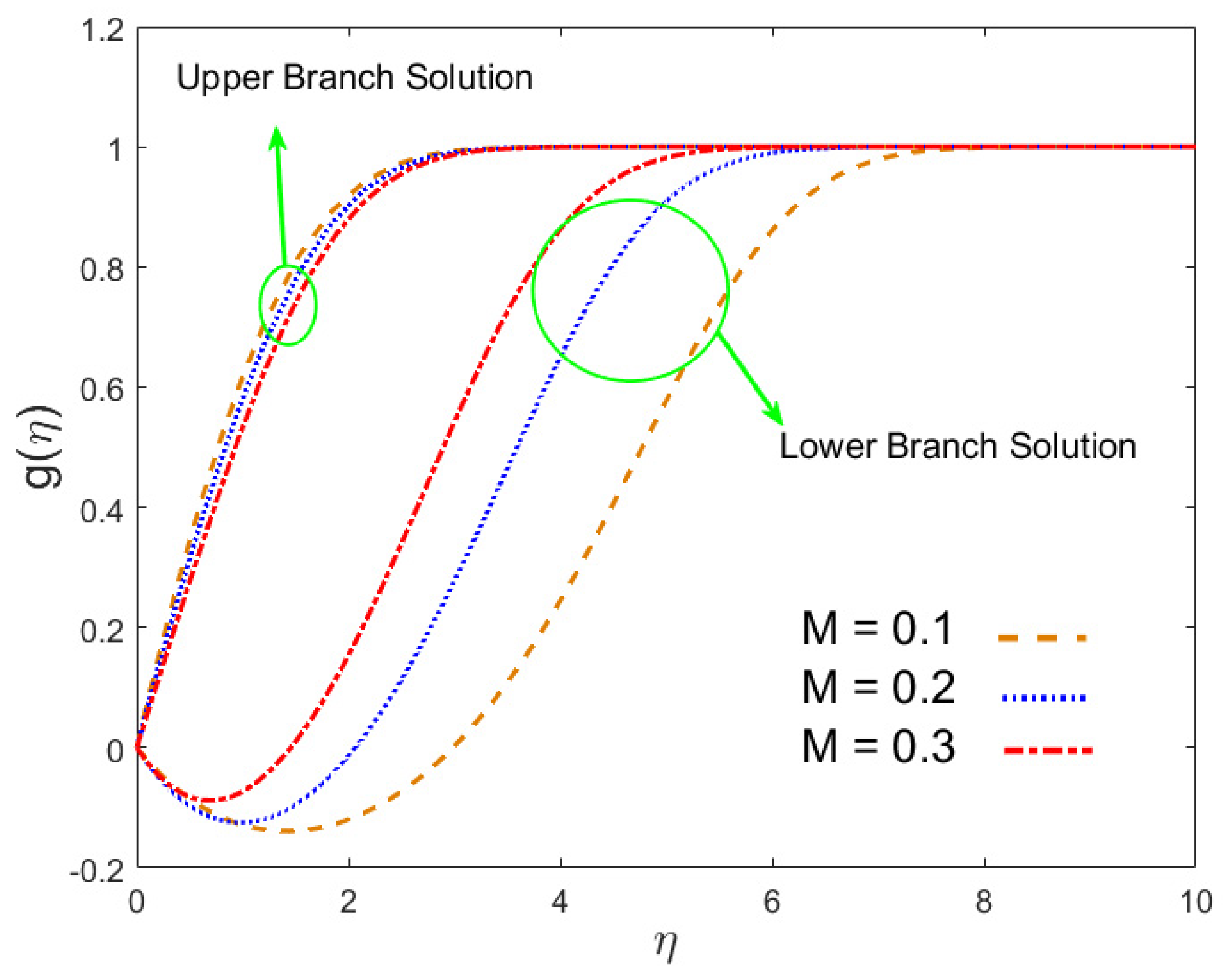
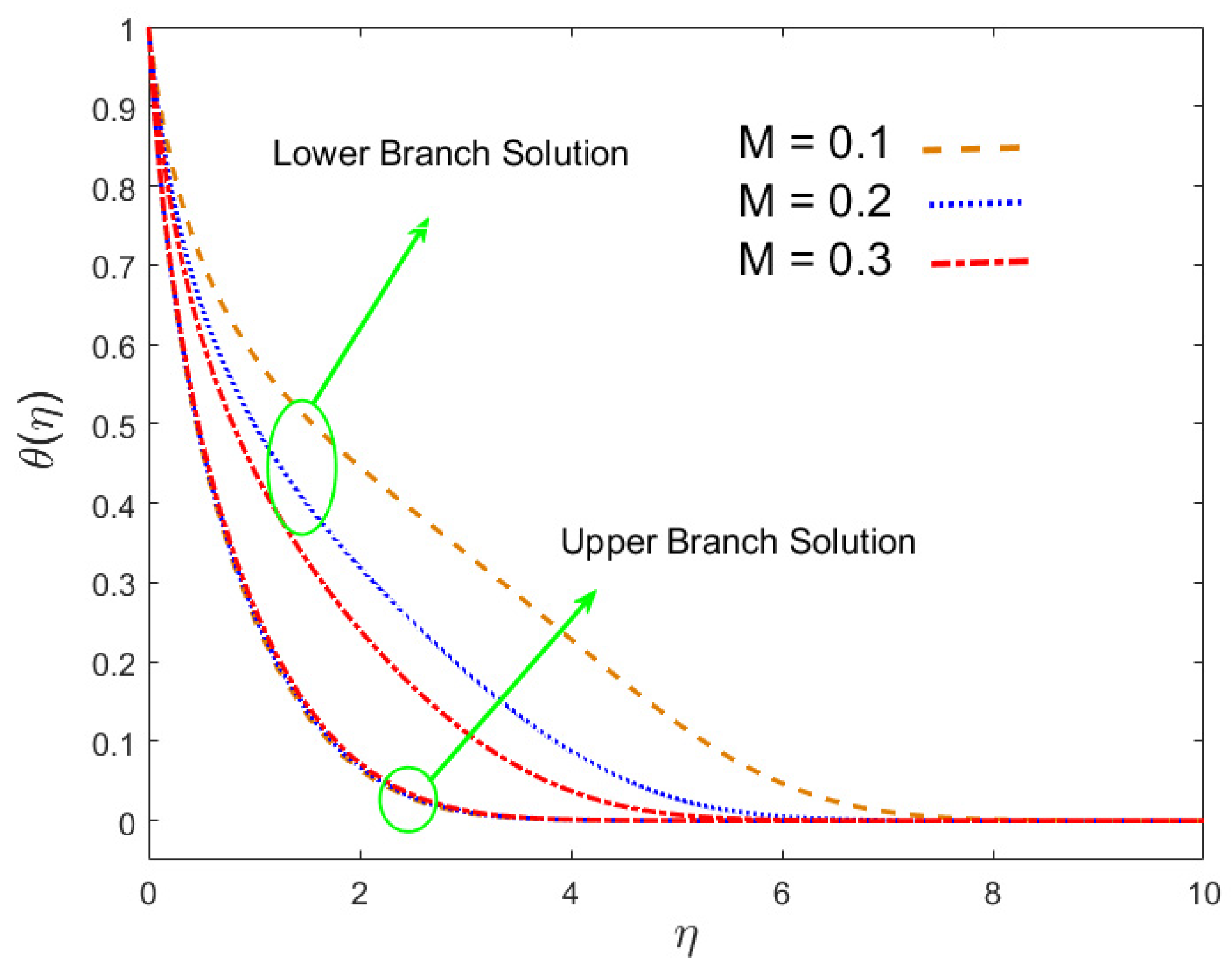
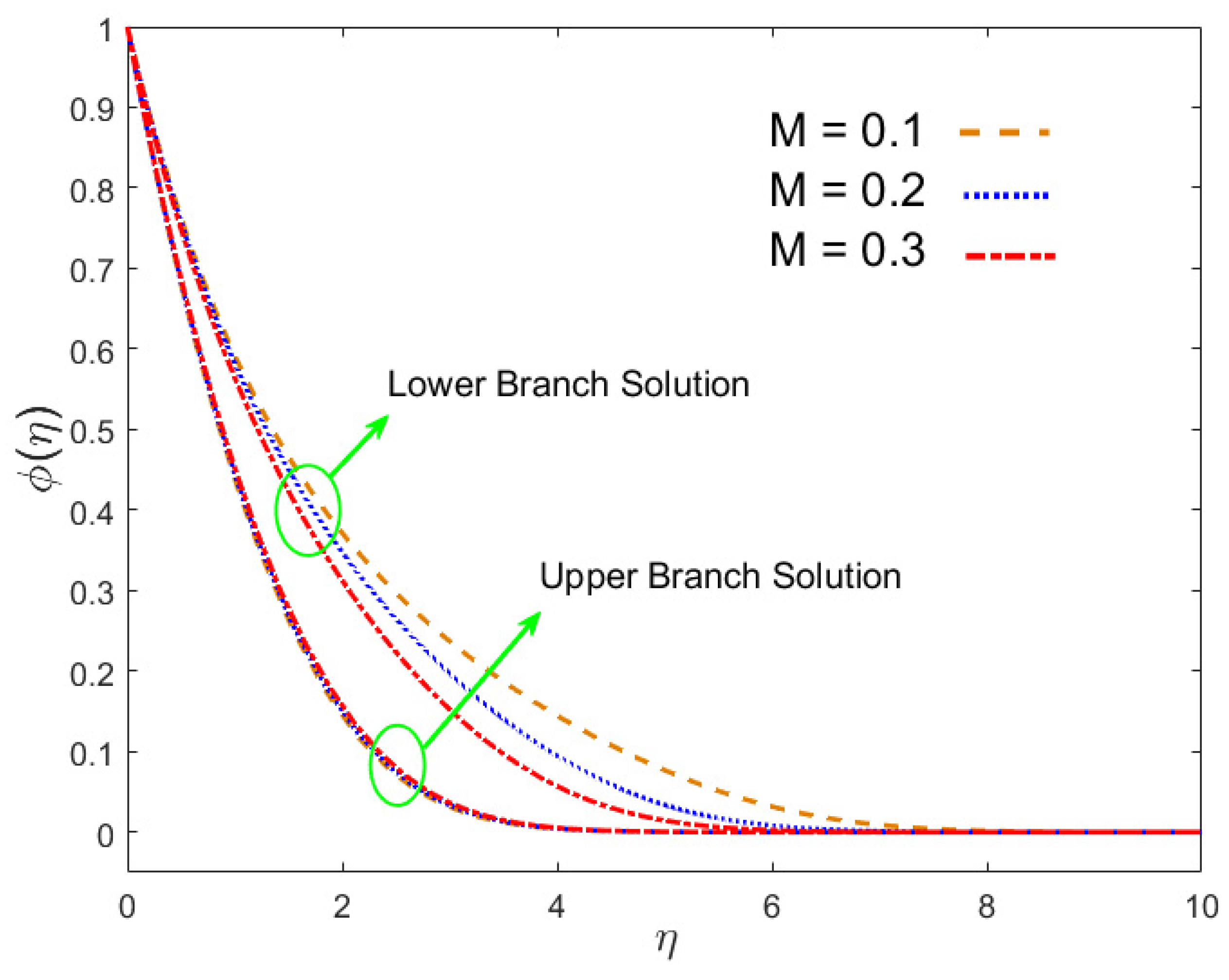
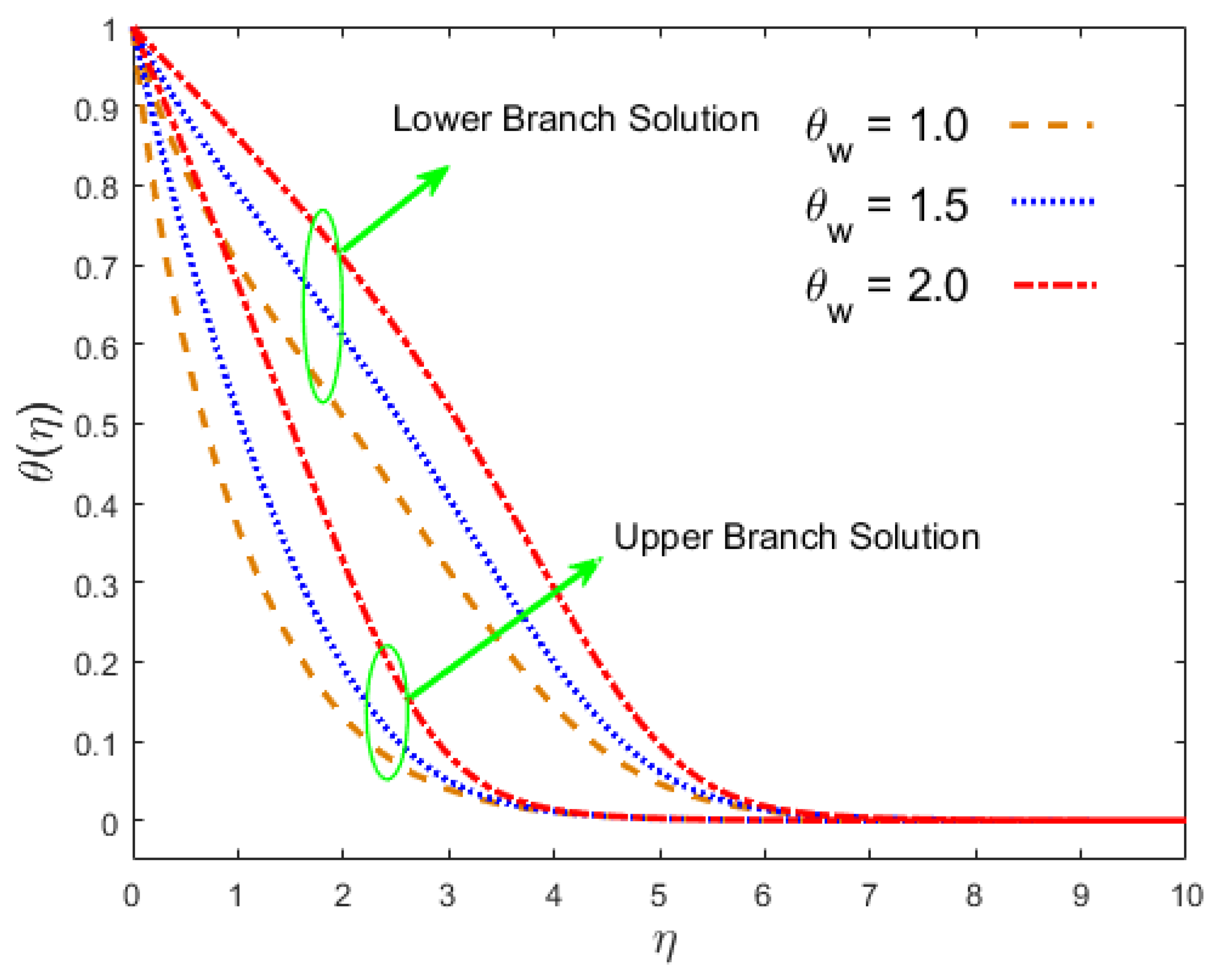
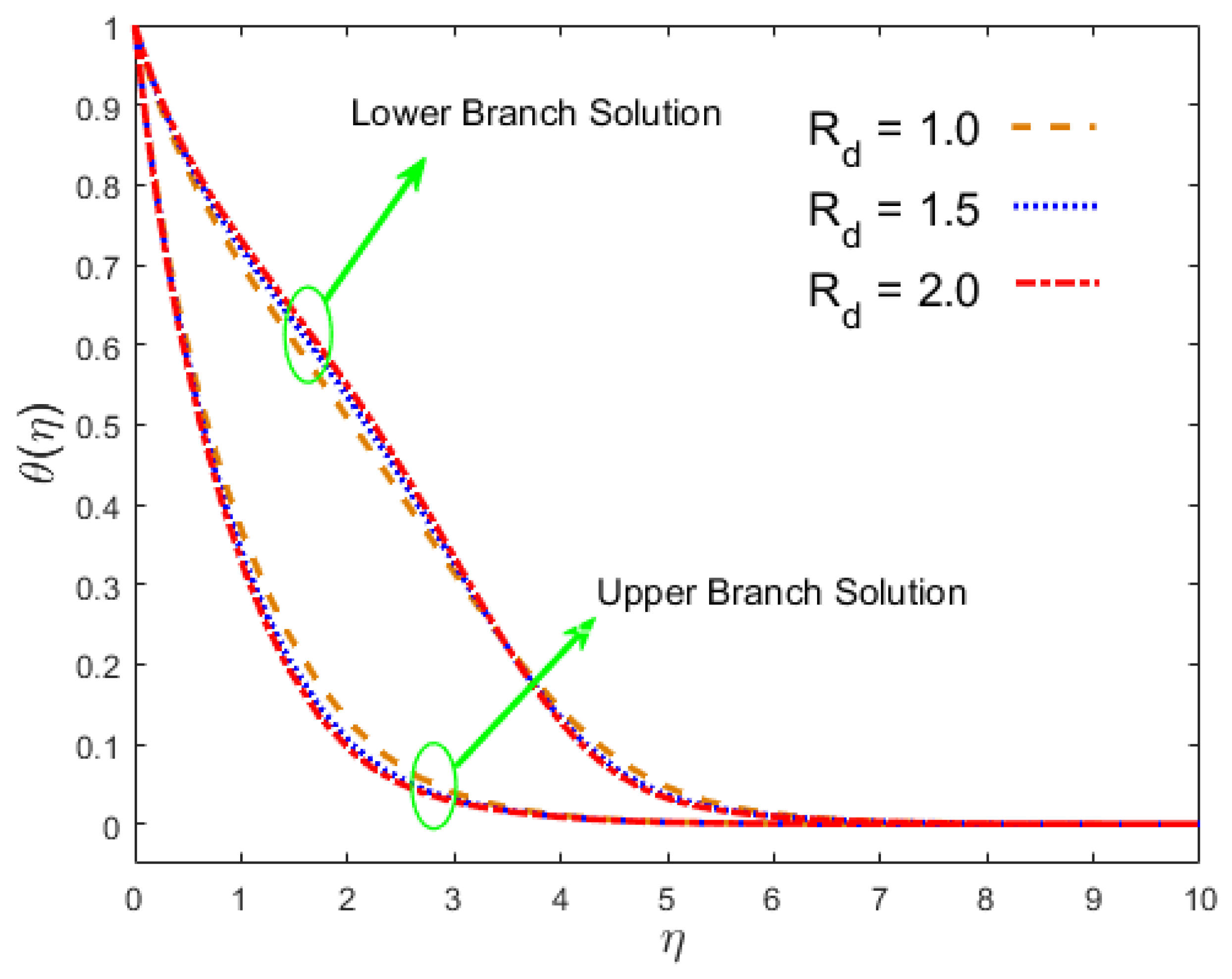

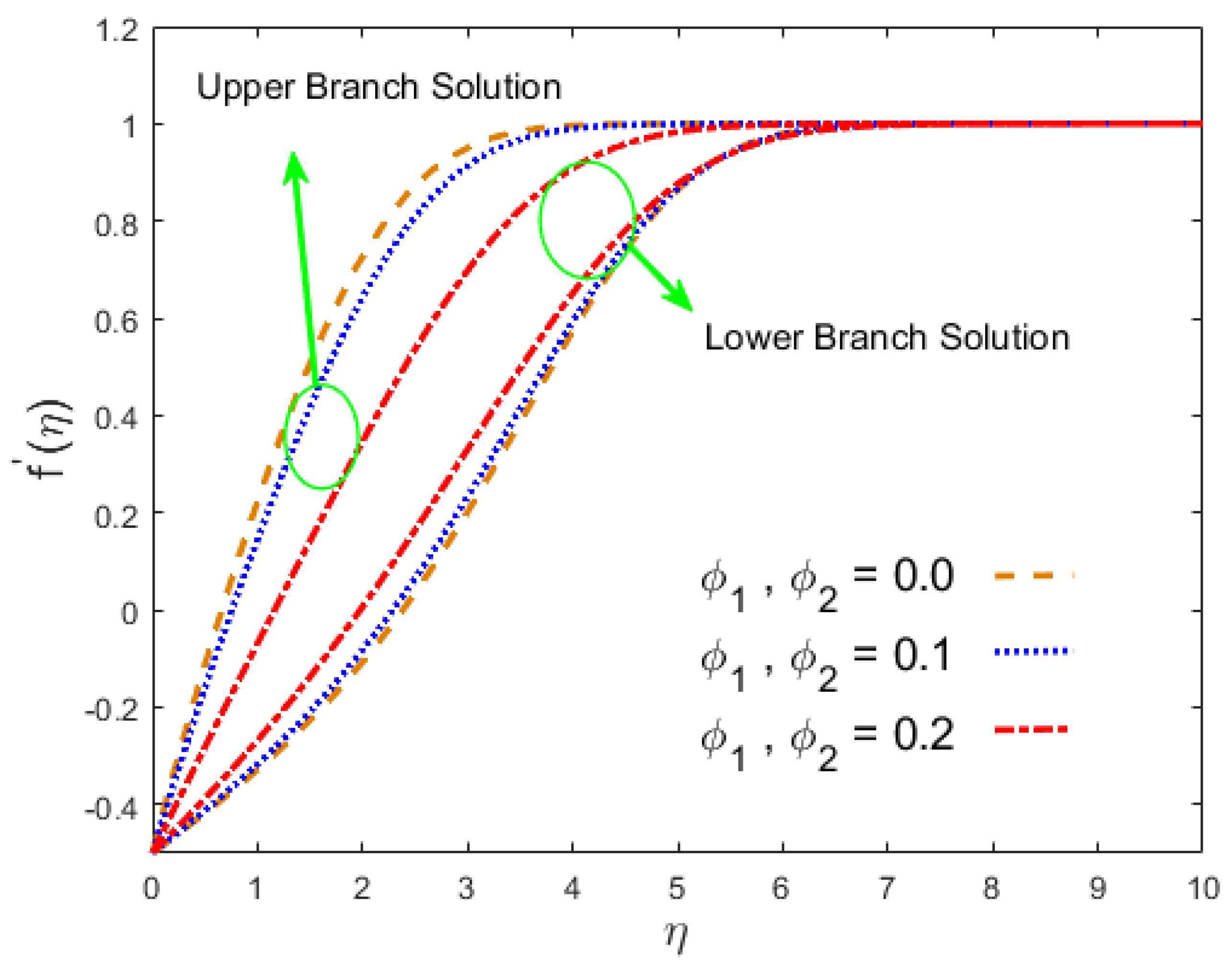
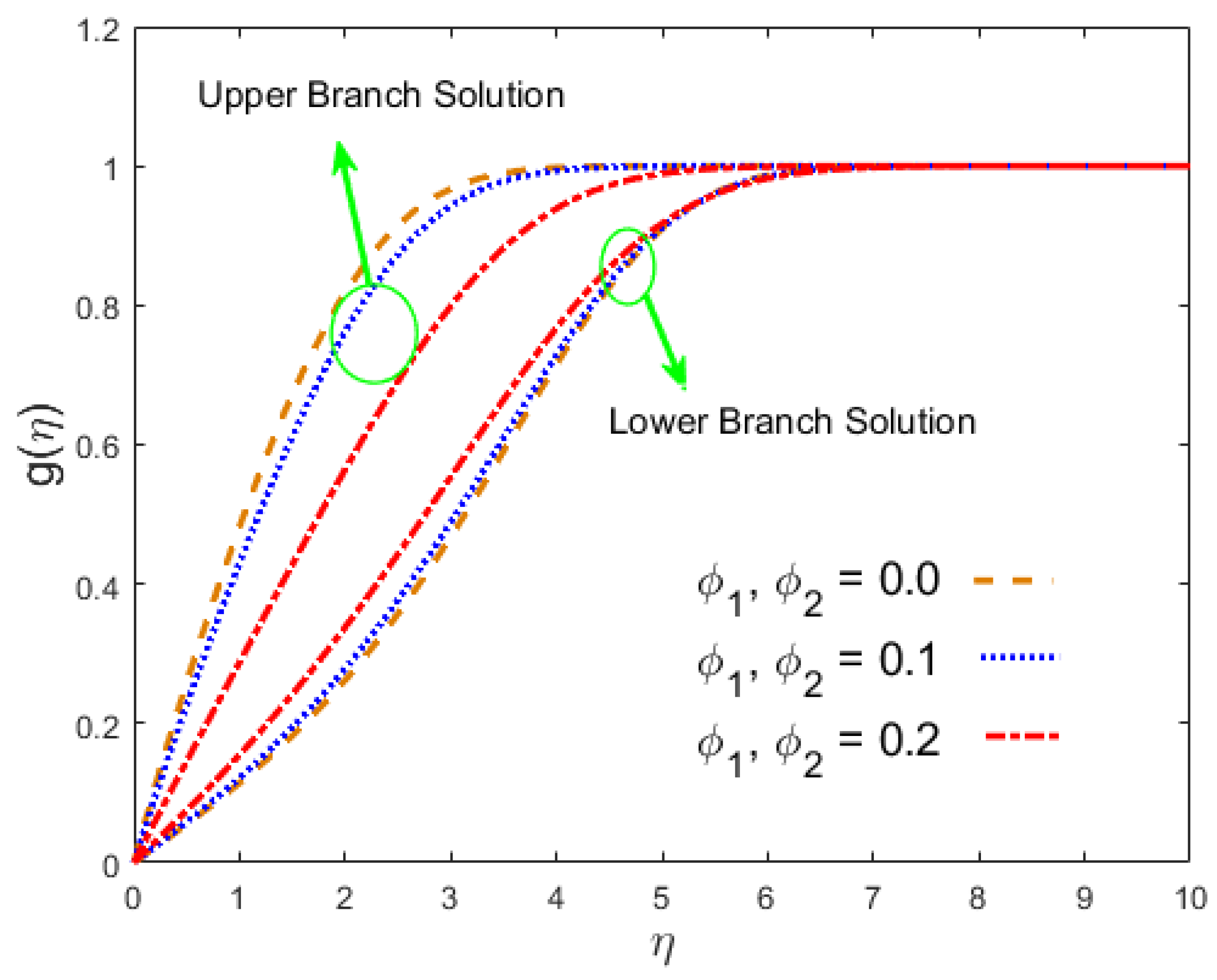

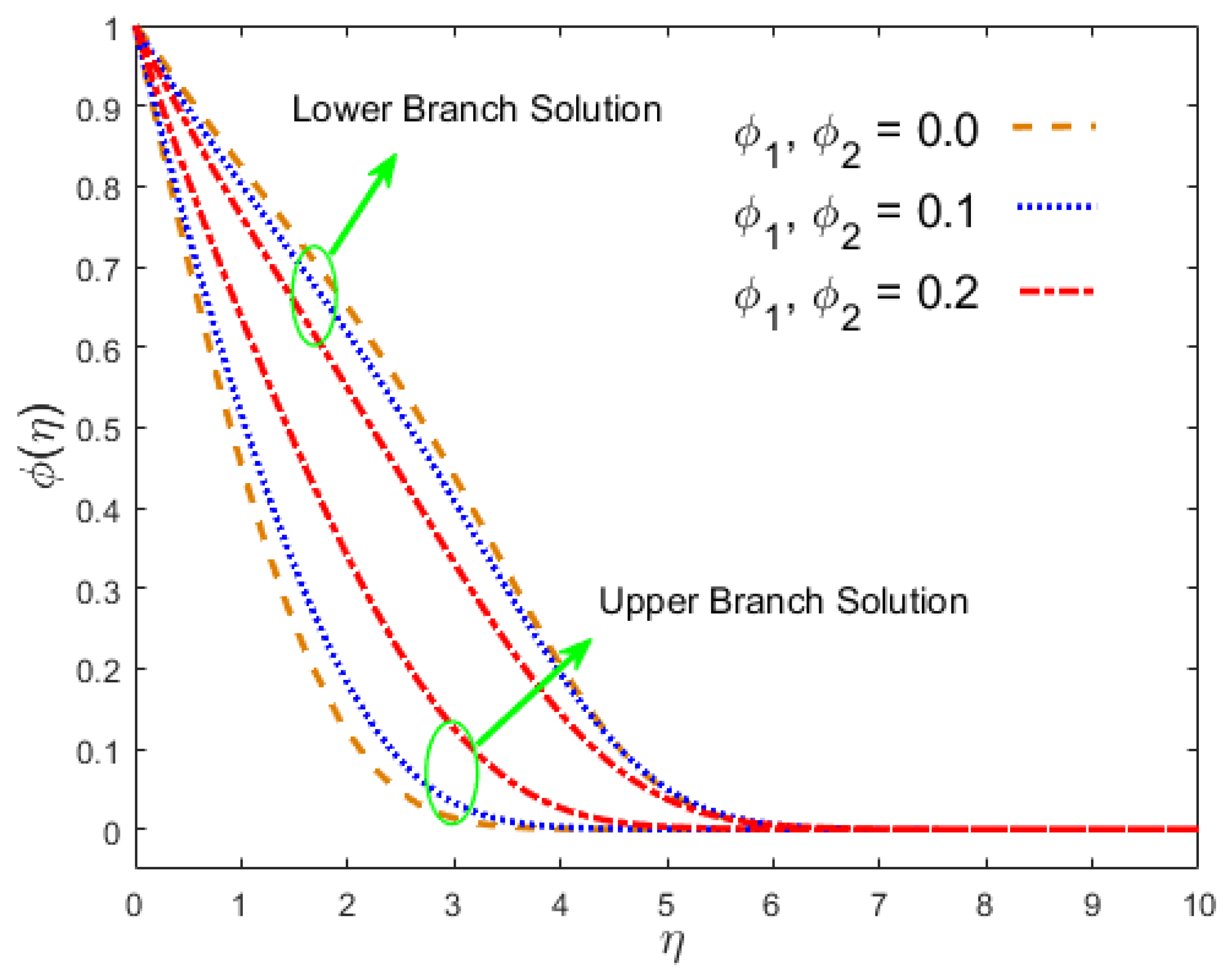
| Properties | Hybrid Nanofluid |
|---|---|
| Density | |
| Viscosity | |
| Mass diffusivity | |
| Electrical conductivity | |
| Thermal conductivity | |
| Heat capacity |
| Thermo-Physical Properties | H2O | ||
|---|---|---|---|
| 997.1 | 2810 | 4420 | |
| 4179 | 960 | 0.56 | |
| 0.6129 | 173 | 7.2 | |
| 0.05 | 26.77 × 106 | 5.8 × 105 |
© 2020 by the authors. Licensee MDPI, Basel, Switzerland. This article is an open access article distributed under the terms and conditions of the Creative Commons Attribution (CC BY) license (http://creativecommons.org/licenses/by/4.0/).
Share and Cite
Nisar, K.S.; Khan, U.; Zaib, A.; Khan, I.; Baleanu, D. Exploration of Aluminum and Titanium Alloys in the Stream-Wise and Secondary Flow Directions Comprising the Significant Impacts of Magnetohydrodynamic and Hybrid Nanofluid. Crystals 2020, 10, 679. https://doi.org/10.3390/cryst10080679
Nisar KS, Khan U, Zaib A, Khan I, Baleanu D. Exploration of Aluminum and Titanium Alloys in the Stream-Wise and Secondary Flow Directions Comprising the Significant Impacts of Magnetohydrodynamic and Hybrid Nanofluid. Crystals. 2020; 10(8):679. https://doi.org/10.3390/cryst10080679
Chicago/Turabian StyleNisar, Kottakkaran Sooppy, Umair Khan, Aurang Zaib, Ilyas Khan, and Dumitru Baleanu. 2020. "Exploration of Aluminum and Titanium Alloys in the Stream-Wise and Secondary Flow Directions Comprising the Significant Impacts of Magnetohydrodynamic and Hybrid Nanofluid" Crystals 10, no. 8: 679. https://doi.org/10.3390/cryst10080679
APA StyleNisar, K. S., Khan, U., Zaib, A., Khan, I., & Baleanu, D. (2020). Exploration of Aluminum and Titanium Alloys in the Stream-Wise and Secondary Flow Directions Comprising the Significant Impacts of Magnetohydrodynamic and Hybrid Nanofluid. Crystals, 10(8), 679. https://doi.org/10.3390/cryst10080679







